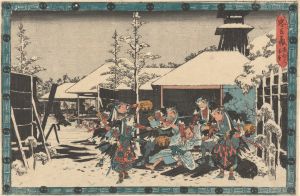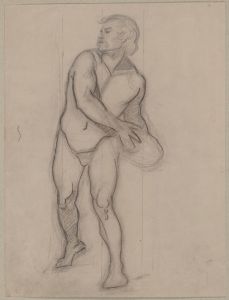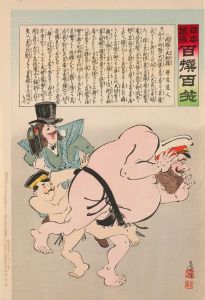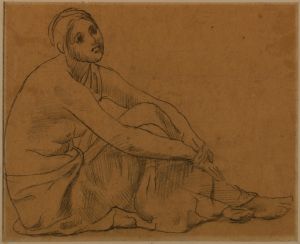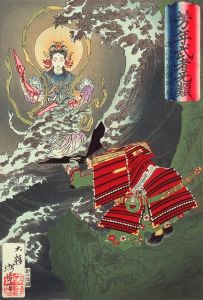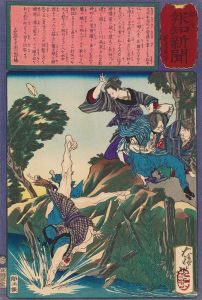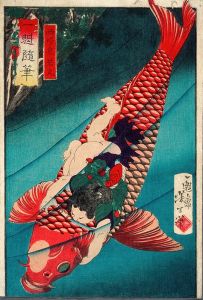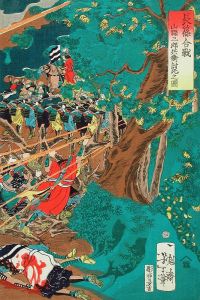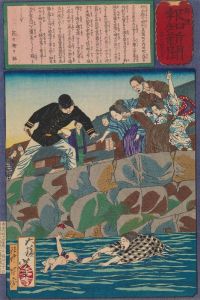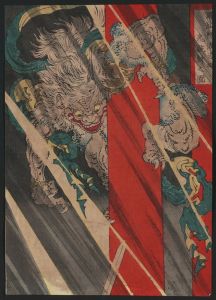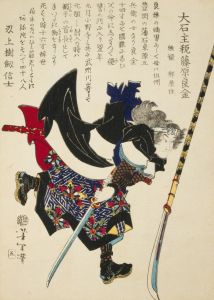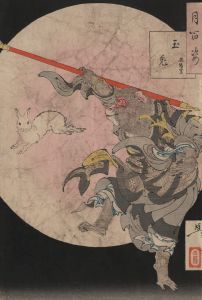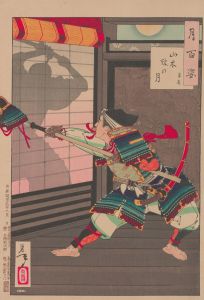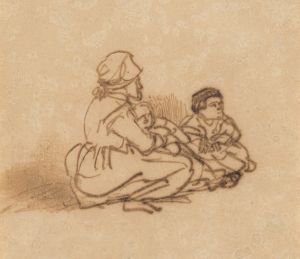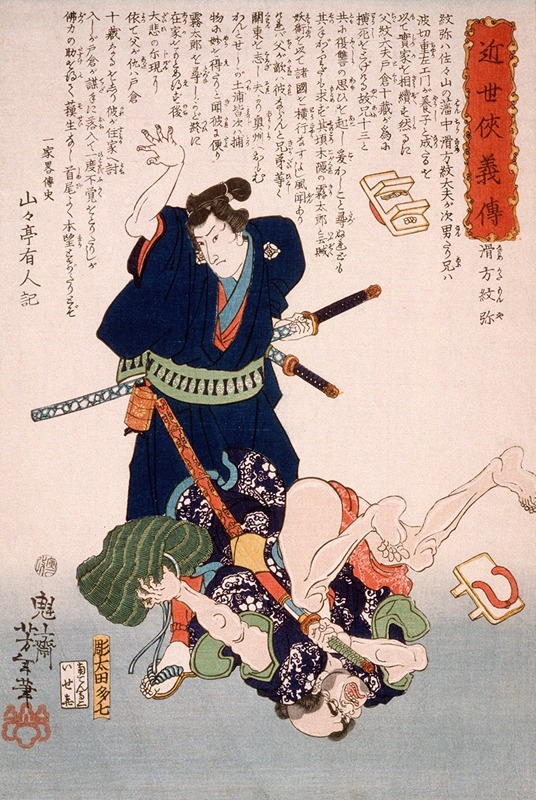
Namekata Monya Throwing an Assailant to the Ground
A hand-painted replica of Tsukioka Yoshitoshi’s masterpiece Namekata Monya Throwing an Assailant to the Ground, meticulously crafted by professional artists to capture the true essence of the original. Each piece is created with museum-quality canvas and rare mineral pigments, carefully painted by experienced artists with delicate brushstrokes and rich, layered colors to perfectly recreate the texture of the original artwork. Unlike machine-printed reproductions, this hand-painted version brings the painting to life, infused with the artist’s emotions and skill in every stroke. Whether for personal collection or home decoration, it instantly elevates the artistic atmosphere of any space.
"Namekata Monya Throwing an Assailant to the Ground" is a woodblock print created by the renowned Japanese artist Tsukioka Yoshitoshi. Yoshitoshi, a prominent figure in the ukiyo-e art movement, is celebrated for his innovative approach to traditional Japanese woodblock printing, particularly during the late Edo and early Meiji periods. This specific artwork is part of Yoshitoshi's series "New Forms of Thirty-Six Ghosts" (Shinkei Sanjūrokkaisen), which was published between 1889 and 1892. The series is known for its exploration of supernatural themes, folklore, and historical narratives, often depicting scenes of ghosts, spirits, and legendary figures.
The print depicts a dramatic scene involving Namekata Monya, a character from Japanese folklore or history, who is shown overpowering an assailant. The composition captures the intensity and dynamism typical of Yoshitoshi's work, with a focus on movement and expression. Yoshitoshi's mastery in portraying human figures and his ability to convey emotion through intricate line work and composition are evident in this piece. The use of color and shading further enhances the dramatic effect, a hallmark of Yoshitoshi's mature style.
Yoshitoshi's work often reflects the cultural and societal changes occurring in Japan during the transition from the Edo period to the Meiji era. This period was marked by the country's rapid modernization and Westernization, which influenced many aspects of Japanese life, including art. Despite these changes, Yoshitoshi remained committed to traditional Japanese themes, often infusing them with contemporary elements to appeal to modern audiences.
In "Namekata Monya Throwing an Assailant to the Ground," Yoshitoshi's attention to detail and his ability to blend realism with the fantastical are evident. The print not only serves as a visual narrative but also as a cultural artifact that offers insight into the values and stories that were significant in Japanese society at the time. The depiction of Namekata Monya, whether based on a historical figure or a legendary hero, reflects the enduring appeal of tales of bravery and skill in Japanese culture.
Yoshitoshi's contribution to the art of ukiyo-e is significant, as he is often credited with revitalizing the genre during a time when it was in decline. His works are characterized by their emotional depth, technical skill, and innovative use of traditional themes. "Namekata Monya Throwing an Assailant to the Ground" exemplifies these qualities, showcasing Yoshitoshi's ability to capture the essence of a story in a single, powerful image.
Today, Tsukioka Yoshitoshi is regarded as one of the last great masters of ukiyo-e, and his works continue to be studied and admired for their artistic and historical significance. His prints, including "Namekata Monya Throwing an Assailant to the Ground," remain popular among collectors and are frequently exhibited in museums around the world, offering a glimpse into the rich tapestry of Japanese art and folklore.





